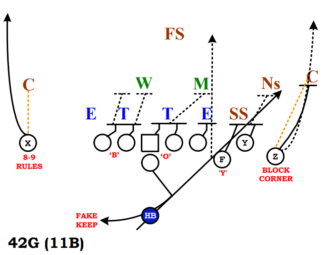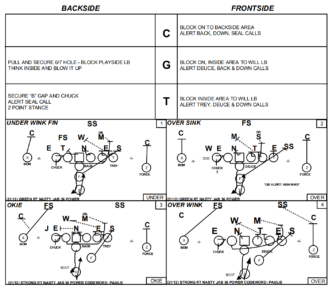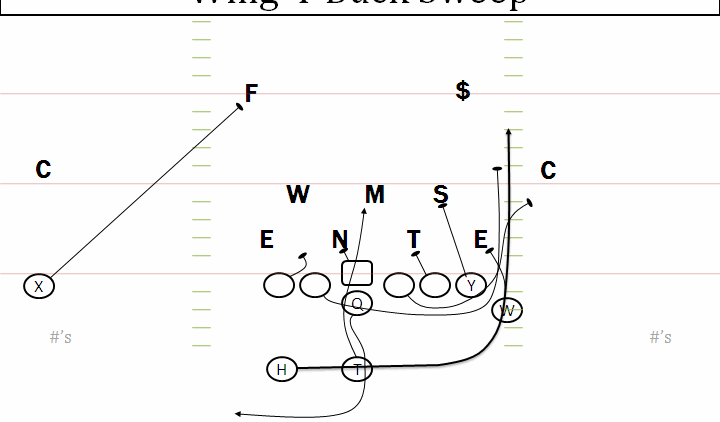
The Buck sweep originated with the Wing-T offense. Recently, more and more teams are sprinkling it into their playbooks out of a number of formations. It entails both offensive guards pulling and leading to one side of the formation. The scheme can wall off defenses and help get the offense outside.
Outside Zone
Buck Sweep Philosophy
In the Buck sweep’s original form with the Wing-T offense, it was usually tied to other Wing-T runs like the buck trap, triple option, or play-action passes. Buck itself is an edge rushing play that hits outside of the tackle or tight end.
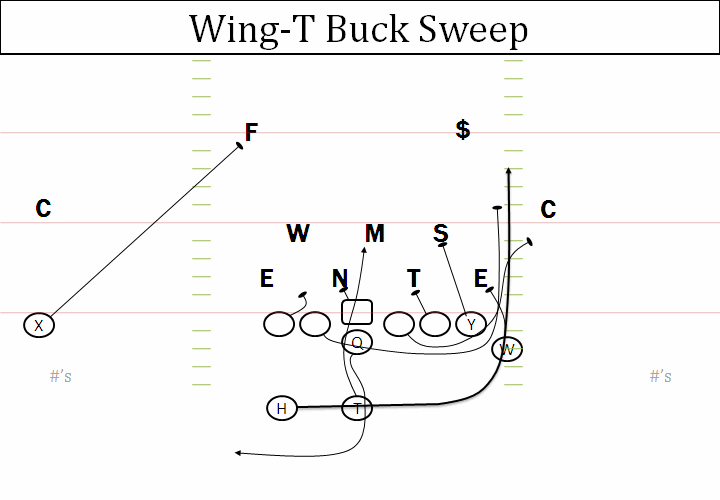
The goal is to wall off the inside defenders with down-blocks from the tackle, tight ends, and center. The offense then wants to out-leverage and gain a man-advantage outside with the two pulling guards. Those guards will either seal outside or kickout the first outside player that appears. The running back will take a wide track and ride his two pulling guards outside and then bounce to daylight. Essential for Buck, though, are athletic guards. Since the play is hitting outside, that’s longer for the guards to travel. Those players are usually less athletic than tackles and can be a hinderance when running Buck. They have to be able to get to the play-side and wrap up-field before the running back beats them to the spot. If there isn’t patience from the back and a clean path for the guards, it can quickly get messy.
Power
Buck Sweep Assignments
Running back:
- Take outside track and bubble behind pulling guards
- The running back must ride the hip of the second guard as they create the path to the play-side
- It is important to pace at the same tempo as the backside guard that is pulling and not overrun the play
Offensive Line:
- Play-side Tackle (PST)
- Check to see if a player is in their backside gap
- If there is, they down-block that player
- If there is not, they climb to the play-side linebacker
- When there is a player in their backside gap, but that player spikes inside and vacates their gap, the tackle will continue up to the second level
- Check to see if a player is in their backside gap
- Play-side Guard (PSG)
- Pull and kickout the first force player that he encounters outside of the tackle or tight ends block
- Some teams instead of kicking up and out, will instead aim for the up-field shoulder and seal that player to allow the second guard to wrap outside
- Pull and kickout the first force player that he encounters outside of the tackle or tight ends block
- Center (C)
- The center has the toughest job on Buck because of the various alignments they can encounter
- The center must block the nose or shade defender
- If that player is to the play-side, they must execute a reach block to get in front and prevent penetration
- If that player is backside, they will down-block
- Backside Guard (BSG)
- Pull with eyes for the play-side inside linebacker
- Must be able to read the leverage of the PSG’s kickout block
- If they kick up and out, they wrap through
- If they engage and seal, they will continue on their track and look to get outside the block and onto third-level defenders like safeties and corners
- Backside Tackle (BST)
- Hinge and protect the backside gap
- They must close space between themselves and the center to prevent penetration and pursuit
- Alternatively, teams will also have the BST work immediately towards the backside linebacker and safety to cut off pursuit
- Hinge and protect the backside gap
Tight End:
- Play-side
- Down-block if defender is in backside gap
- If no defender is present in backside gap, climb to the second level
- Backside
- Hinge and protect backside gaps
- Having a tight end backside can also clear them to hinge and protect while the BST attempts to climb to the backside inside linebacker to cut them off
Sail Concept
Buck Sweep Examples
Here is the kickout version of Buck from the Cowboys. The backside gaps are critical in Buck if you aren’t a guard that’s pulling. The wing, #86 down-blocks his backside gap player. #80, the tight end, doesn’t have anyone in his backside gap. As a result, he goes to climb to the backside inside linebacker. The tackle and center both down-block and the backside tackle hinges to prevent penetration. Since the tight end is taking the backside inside linebacker, the second guard will be taking the play-side inside linebacker, #48. The PSG does a great job of getting the downfield shoulder of the force defender and Ezekiel Elliott has paced himself well behind the BSG who is coming to take the play-side linebacker. The down-blocks have all created a wall to prevent pursuit and the Cowboys break off a nice chunk gain.

The Browns are looking to get outside and out leverage the defense with their version of Buck. You can see by alignment that Washington is going to be outnumbered with two additional lineman coming to the nub tight end (left) side. The play-side tight end gives a small nod and stem to the force player to hold them for a split second. That gives the PSG the chance to get their upfield shoulder and turn them inside. Meanwhile, the play-side tight end that gave the stem to the force defender has worked onto the play-side inside linebacker. That leaves one corner outside that has to match up with a pulling guard.

Comparatively, the Chiefs are trying to run the same seal with their PSG, but the BSG wraps through what he reads as a kickout. This play is designed to go outside with Travis Kelce in a tight split working to seal the play-side linebacker from scraping outside. If the BSG had stayed on track outside, it would have created a one-on-one situation with the corner outside. However, the BSG attaches to the first enemy color and tries to lead inside. All the other blocks are executed well, though, and Kansas City is still able to pick up five yards on the play.
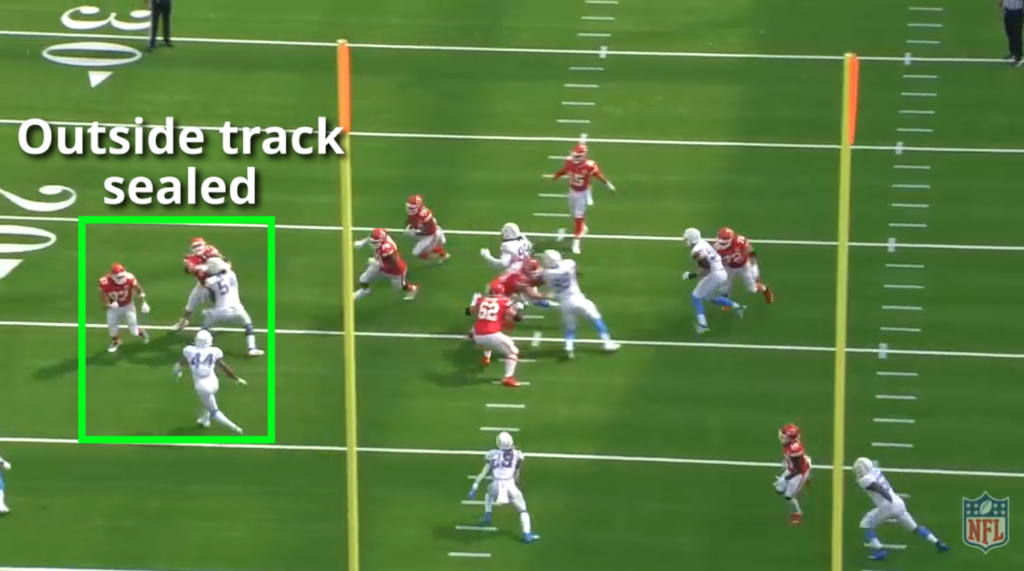
Summary
Buck is transforming from a Wing-T play to a play that is a part of a lot of offenses in the NFL. Whether it’s trying to stress the edges with the kick and seal blocks or hit more vertically off the tackle, it’s a great change of pace play and brings physicality with big guys out on the edge.

